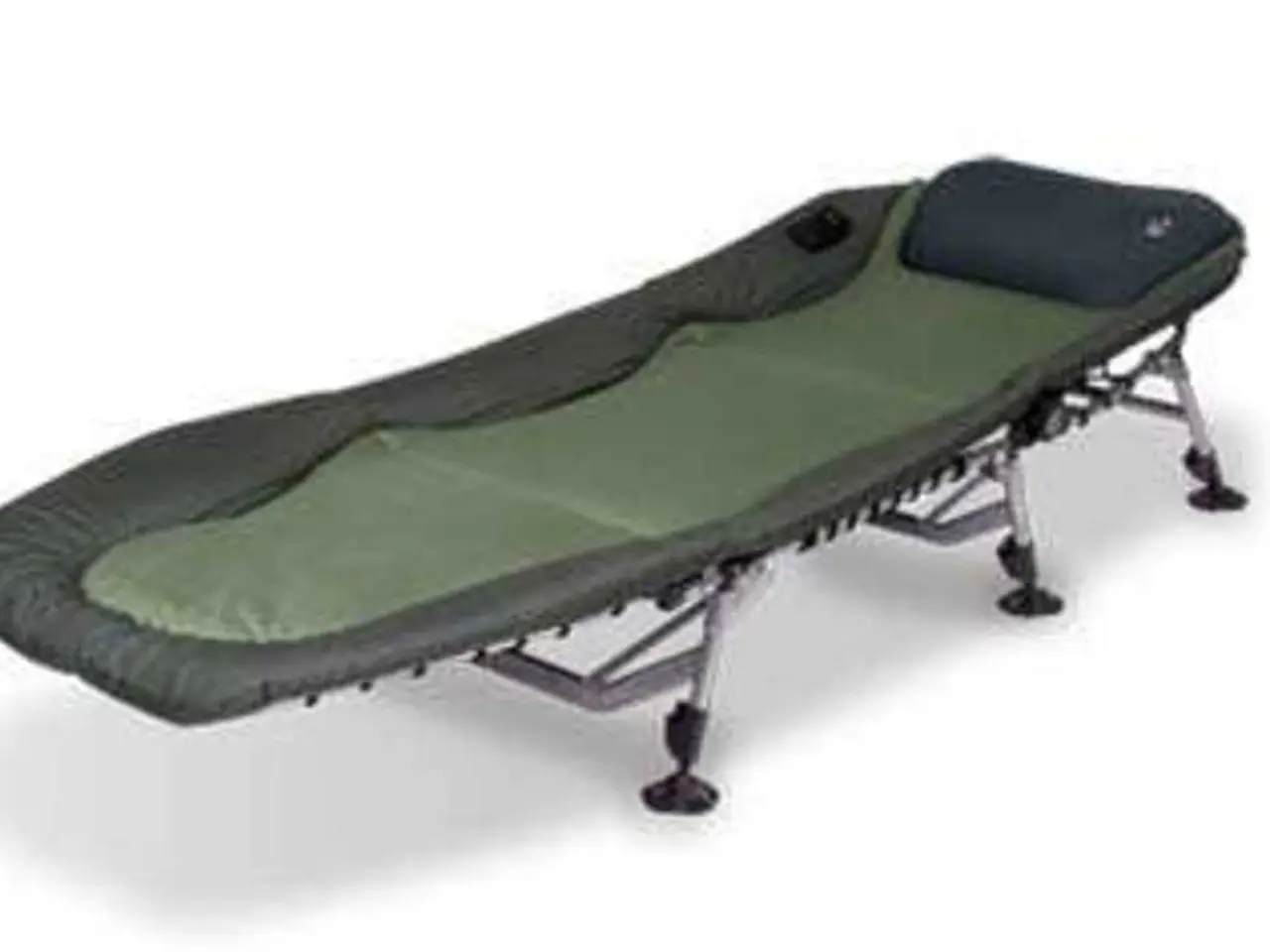Scoliosis Assessment: Detailed Inspections, Outcomes, and Interpretations
In the journey of growth and development, some children and adolescents may encounter a condition known as scoliosis. This article aims to shed light on the early detection, treatment, and management of scoliosis.
Scoliosis is a sideways curvature of the spine, which can become apparent as a child or teenager grows. Early detection is crucial, as it allows doctors to monitor the curve and recommend appropriate treatment if necessary. The primary screening test for scoliosis is the Adam's test, also known as the forward bend test. During this test, a person removes their shirt so that the spine is visible and bends forward with knees straight and feet together, allowing the arms to hang freely.
If the Adam's test suggests scoliosis, a doctor will typically recommend radiographic imaging (X-rays) to confirm the diagnosis and determine the best course of treatment. The imaging helps measure the curve severity using the Cobb angle. Curves over 10° confirm scoliosis, while those over 40° are considered severe and may require surgery.
Doctors consider a curve of more than 25 but less than 40 degrees to be a moderate case. For such cases, they may recommend a brace for children and adolescents who are still growing. Mild curves sometimes only require monitoring to check for progression. A doctor may also suggest physical therapy to strengthen muscles around the spine and potentially reduce spinal curvature.
In severe cases of scoliosis, if the curve is progressing or having a serious impact on someone, a doctor may recommend surgery. Before surgery, MRI or CT scans may be ordered to show other structures of the spine, such as the spinal cord.
Regular screenings are especially important during adolescent growth spurts when scoliosis can progress quickly. Evidence underscores personalized long-term monitoring to adapt treatment plans based on progression, age, and overall health. No universal mandate exists for mass scoliosis screening, but clinical guidelines advocate for routine checks in school-age children, especially girls aged 10-14, due to higher risk and severity in females.
The recommended guidelines for scoliosis screening in children and adolescents emphasize early detection through physical examination, particularly the Adam's Forward Bend test, to identify spinal curvature exceeding 10 degrees. Early scoliosis screening typically includes a physical exam focusing on symmetry of shoulders, waist, and hips, as well as the Adam's Forward Bend test. If screening suggests scoliosis, radiographic imaging is recommended to measure curve severity.
A multidisciplinary approach also includes psychological support and non-surgical interventions such as physical therapy and bracing to control curvature progression early. The goal is to prevent worsening deformity and enhance quality of life.
A 2021 nonrandomized controlled trial found that participants who performed isometric and yoga-like exercises had an average curve reduction of 1.6 degrees per month. While more research is needed, this suggests that exercise may play a role in managing scoliosis.
In summary, scoliosis screening in children and adolescents involves early, routine physical exams emphasizing the Adam's Forward Bend test, careful attention to asymmetry, use of imaging for diagnosis and monitoring, and tailoring follow-up and treatment during growth to prevent worsening deformity and enhance quality of life.
- In pediatrics, scoliosis is a condition children and adolescents might face, which causes a sideways curvature of the spine.
- Knowledge about early detection, treatment, and management of scoliosis is important for parents and healthcare providers.
- The Adam's test, or forward bend test, is the primary screening method for identifying scoliosis; it allows the spine's visibility during the test.
- If the Adam's test indicates scoliosis, radiographic imaging — X-rays — are typically recommended for confirmation and severity measurement using the Cobb angle.
- Scoliosis curves over 10° are confirmed, while those over 40° are severe cases potentially requiring surgery.
- Mild to moderately severe scoliosis (over 25° but less than 40°) may be managed with bracing, physical therapy, or even just monitoring.
- Severe scoliosis, either continuing to progress or having a significant impact, may necessitate surgical intervention.
- Regular screenings are crucial during adolescent growth spurts, as scoliosis can advance quickly.
- Personalized long-term monitoring is essential to adapt treatment plans based on progression, age, and overall health.
- No universal policy dictates mass scoliosis screenings, but clinical guidelines suggest routine checks for school-age children, particularly girls aged 10-14.
- Early detection through physical examination, including the Adam's Forward Bend test, is crucial for identifying scoliosis over 10 degrees.
- A multidisciplinary approach for scoliosis includes psychological support, physical therapy, and bracing to control curve progression.
- Research suggests that exercise, such as isometric and yoga-like exercises, may help reduce scoliosis curves, so more study is needed in this area.
- In the case of scoliosis, science plays a significant role in early detection, treatment, and management.
- Scoliosis management can contribute positively to a child's or adolescent's workplace-wellness and overall health.
- Besides scoliosis, the medical-conditions spectrum is vast, including chronic diseases, cancer, respiratory conditions, digestive health issues, eye-health problems, hearing impairments, and more.
- Aside from scoliosis, other common health-and-wellness concerns involve fitness-and-exercise, mental-health issues, skin-conditions, and therapies-and-treatments.
- In addition to scoliosis, autoimmune-disorders, environmental-science data, climate-change impacts, industrial advancements in manufacturing and finance, energy consumption, and cybersecurity threats are relevant topics.
- Advances in technology, such as artificial-intelligence, data-and-cloud-computing, and gadgets, play a significant role in both scoliosis research and various other industries.
- Maintaining good relationships is crucial for emotional health and well-being, whether with partners, family, friends, or pets.
- Lifestyle choices, including fashion-and-beauty trends, food-and-drink preferences, home-and-garden designs, business investments, personal-finance management, and banking-and-insurance services all impact overall health and wellness.
- Travel, cars, books, shopping, social-media platforms, movies-and-TV shows, celebrities, music, and pop-culture trends contribute significantly to entertainment and leisure activities.
- Science and technology continue to play essential roles in various aspects of life, from scoliosis management to space-and-astronomy discoveries, environmental protection, and even fashion design.
- Each industry, such as finance, retail, transportation, healthcare, and even the entertainment sector, is interconnected, shaping pop-culture and influencing common practices.
- Scoliosis is just one example among the myriad medical-conditions and healthcare concerns addressed by the industry.
- The wide range of topics includes not only scoliosis but also chronic diseases, cancer, respiratory conditions, cardiovascular health, neurological disorders, digestive health, eye-health, and more.
- By adopting healthy lifestyle practices, such as proper nutrition, fitness-and-exercise, and skin-care routines, people can improve their health and live longer, happier lives.
- In organic health remedies, like CBD, people believe they can achieve relief from certain symptoms related to chronic diseases and neurological disorders.
- Education and research in environmental science and climate-change are critical to combating their impacts on overall health and well-being.
- As we continue to progress in various areas, including healthcare, technology, finance, and lifestyle choices, we must remember that unity and collaboration are key to improving the lives of people worldwide, just as early scoliosis detection and management work towards bettering the lives of children and adolescents with this condition.




